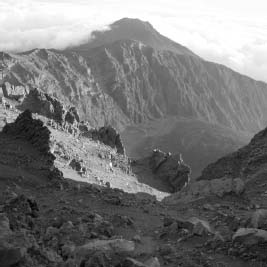BuddhismMembership, Community, Diversity |
Are there any Buddhist holy sites or cities? |
Important to Buddhists universally are the places associated with central events in the life of the Buddha. Sites identified with his birth (the Lumbini Grove), enlightenment (Bodhgaya), first sermon (the Deer Park near Benares), and entering into nirvana (Kushinagara) are at the top of the list. Pilgrims from all over the world now travel to India on pilgrimage to these and dozens of other locations of slightly lesser importance. No one city in India functions for Buddhists quite the way Mecca, Jerusalem, and Rome do for Muslims, Jews, and many Christians. Various cities have become associated with important Buddhist temples and monasteries, but they have rarely if ever attracted pilgrims precisely as cities. Instead, pilgrims head for specific sites and temples.
Outside India, dozens of places are sacred to members of the various Buddhist denominations. Many are associated with mountains. Ancient pre-Buddhist traditions in both China and Japan, for example, attributed supreme sanctity to the high places that, according to some spiritual maps, marked the outer limits of the cosmos at the cardinal points. Different sects and lineages often chose mountains for their spiritual centers because of the centrality of Mt. Meru in ancient Hindu myth. Mountains symbolize a point of interconnection among the several levels of the cosmos. They also can be readily imagined as huge mandalas around which spiritual seekers circumambulate en route to the center.

Mountains are considered spiritual places to Buddhists, who lend them cosmological importance.
